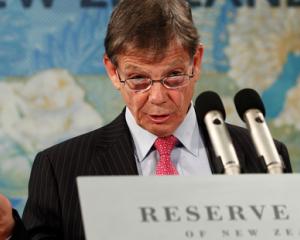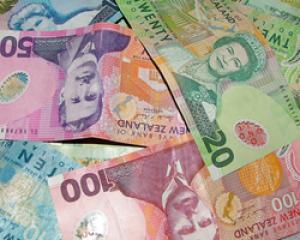The Reserve Bank is expected to lift the official cash rate (OCR) by 0.25% to 2.75% on Thursday, the first increase in more than a year.
But not everyone wants the rise.
The New Zealand Manufacturers and Exporters Association is arguing that a rate hike should be delayed.
ASB chief economist Nick Tuffley said recent data had provided further evidence that a self-sustaining recovery was taking place.
In particular, businesses had become more confident of a recovery in demand and were planning for expansion.
That was reflected in the growth in employment over the March quarter, he said.
There were also signs of inflation pressures building up.
Recent surveys showed medium-term inflation expectations continuing to move close to the top of the Reserve Bank's target band of 3%.
Added to that were a host of government charges this year in the form of tobacco excise taxes, ACC levies, higher energy costs through the implementation of the emissions trading scheme and the increase in GST.
"While these items can be looked through by the Reserve Bank, the combined factors are expected to push annual headline inflation close to 6% by the middle of next year and will test the Reserve Bank's key assumption that inflation expectations will remain contained."
Underlying inflation pressures would also lift as the economy recovered, Mr Tuffley said.
Considering domestic conditions in isolation would indicate overwhelmingly that the Reserve Bank would increase the OCR on Thursday.
However, recent developments in the euro zone had introduced some uncertainty into the decision.
Fears of the sovereign debt crisis in Greece and Spain spreading to other European economies had heightened risk aversion although there had been a stabilisation in debt markets more recently, he said.
Market pricing now implied an 80% chance of a rate increase on Thursday.
"Given the effects of the sovereign debt crisis on New Zealand have been limited to date, we expect the Reserve Bank will begin removing monetary policy stimulus at the June monetary policy statement," Mr Tuffley said.
BNZ markets economist Stephen Toplis said whether the central bank raised rates in June or July remained a moot point but he was sticking to his call for a rise on Thursday.
"For the majority of folk, it doesn't really matter.
The key messages are: the cash rate is going to go up; it's going up soon; and it'll go up lots.
"Sure, it won't rise to the giddy heights that it may have in past cycles but that's not to say that lenders will benefit from lower rates."
The lower expected peak in the cash rate reflected that the margin between the overnight cash rate and bank funding rates had blown out, he said.
For borrowers, that was a difficult environment.
Often, New Zealand faced a flat to negative yield curve so rate hikes could be avoided by fixing.
But this time, the steeply upwardly sloped curve meant borrowers would have to make a decision based on their own degree of risk aversion, while accepting that whether they fixed or not, their interest rate costs were likely to rise from current levels, Mr Toplis said.
However, the New Zealand Manufacturers and Exporters Association is calling on the Reserve Bank to resist lifting interest rates until at least September.
Chief executive John Walley said a rate rise this week would pose "significant risks" to the tradeable economy which was already suffering through the lack of profitability caused by an overvalued currency.
"The argument for an OCR hike just doesn't stack up.
Export sales, business investment, job numbers and retail sales figures are weighing against an OCR rise.
If the OCR is increased it could further threaten any future export recovery," he said.





